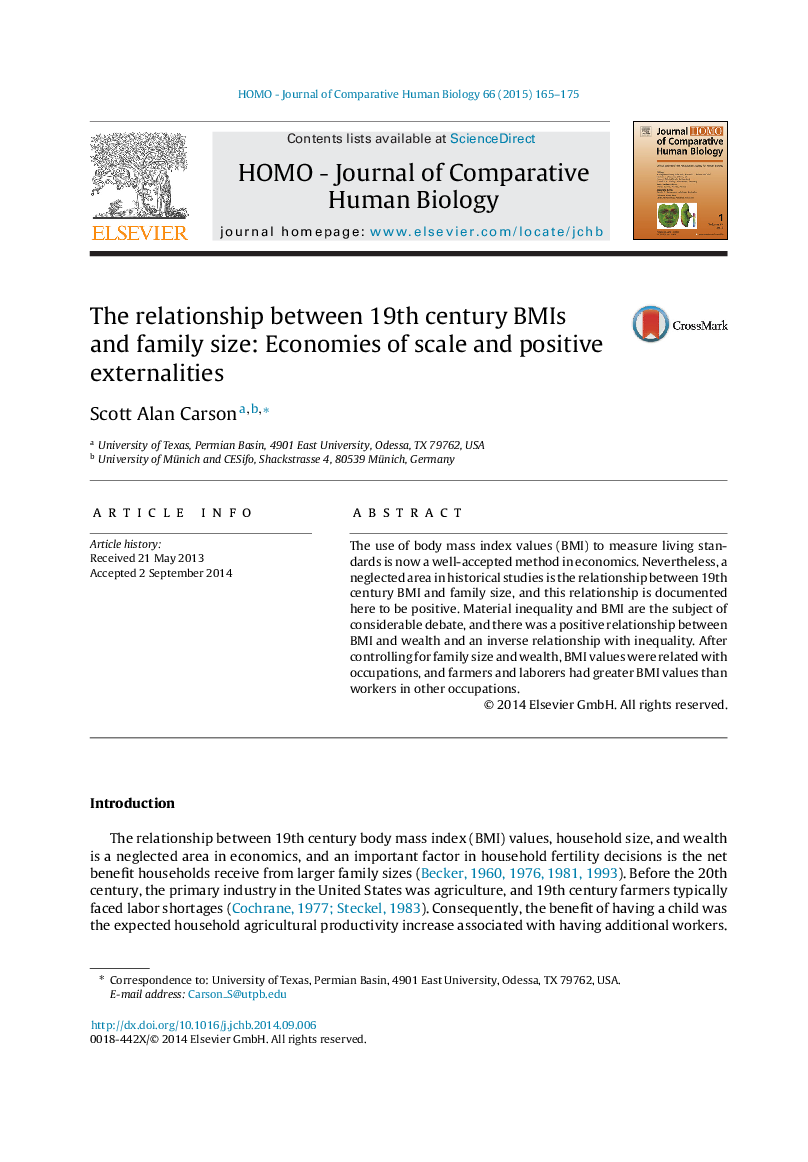| Article ID | Journal | Published Year | Pages | File Type |
|---|---|---|---|---|
| 100247 | HOMO - Journal of Comparative Human Biology | 2015 | 11 Pages |
Abstract
The use of body mass index values (BMI) to measure living standards is now a well-accepted method in economics. Nevertheless, a neglected area in historical studies is the relationship between 19th century BMI and family size, and this relationship is documented here to be positive. Material inequality and BMI are the subject of considerable debate, and there was a positive relationship between BMI and wealth and an inverse relationship with inequality. After controlling for family size and wealth, BMI values were related with occupations, and farmers and laborers had greater BMI values than workers in other occupations.
Related Topics
Life Sciences
Agricultural and Biological Sciences
Ecology, Evolution, Behavior and Systematics
Authors
Scott Alan Carson,
